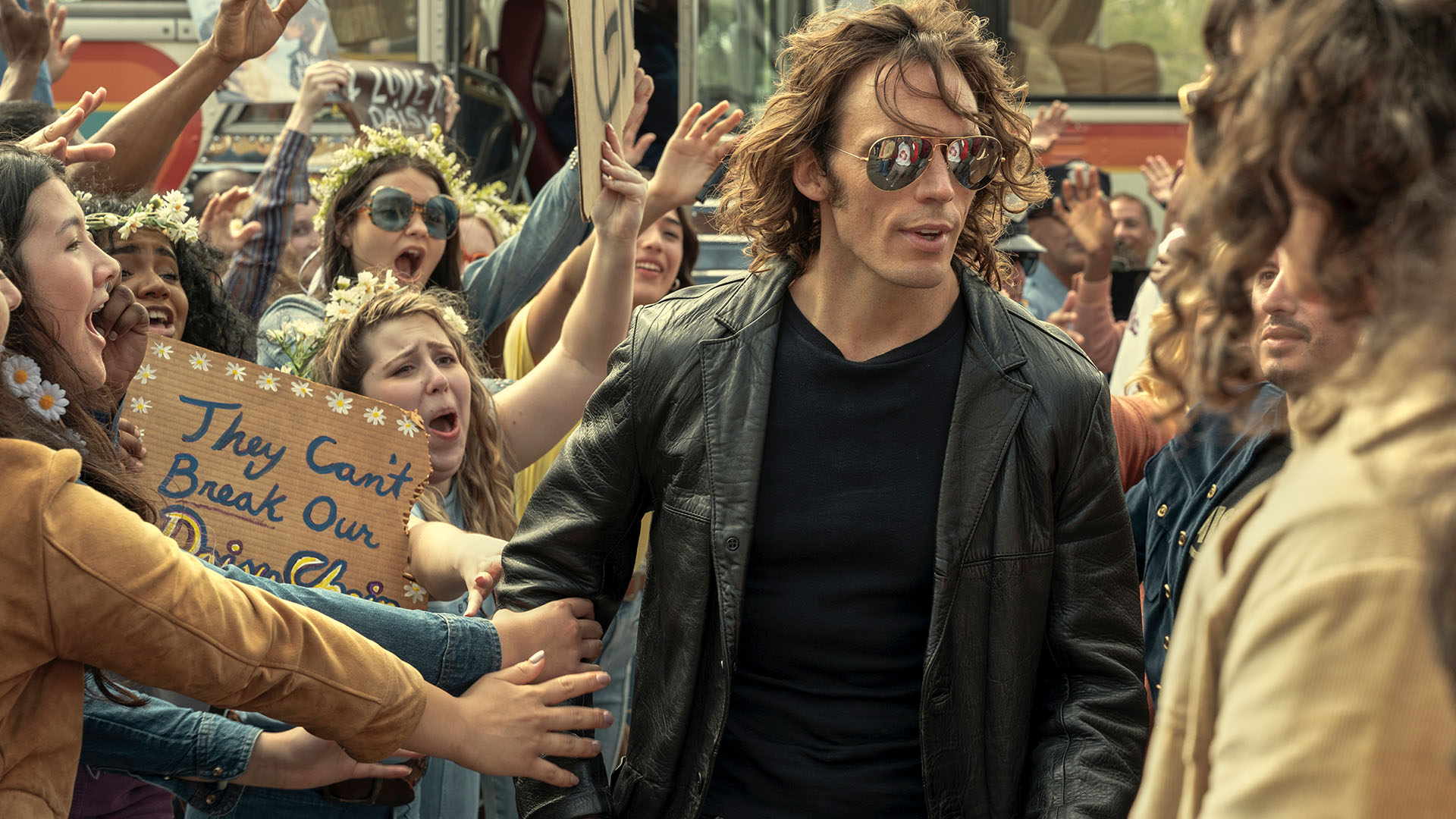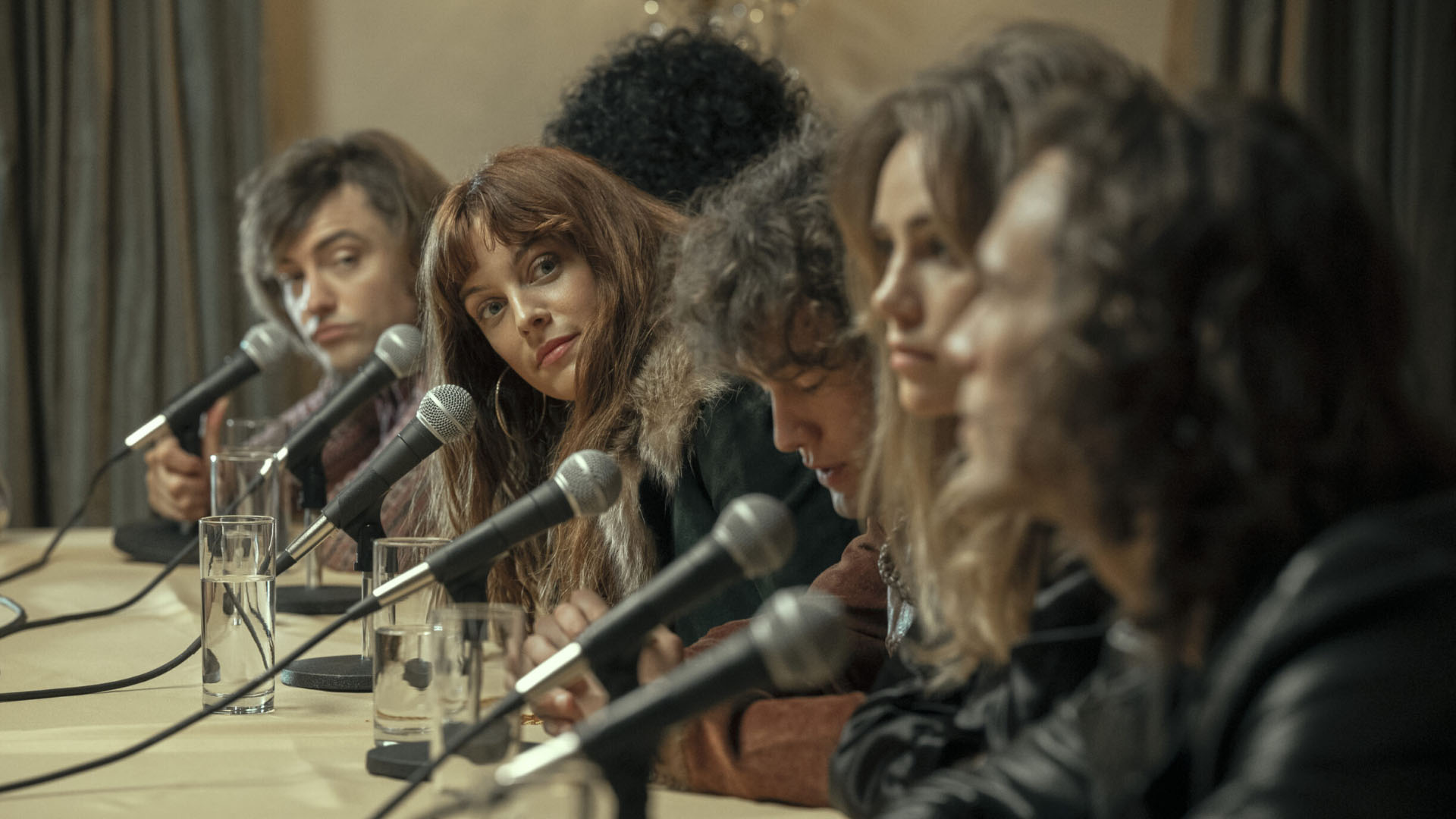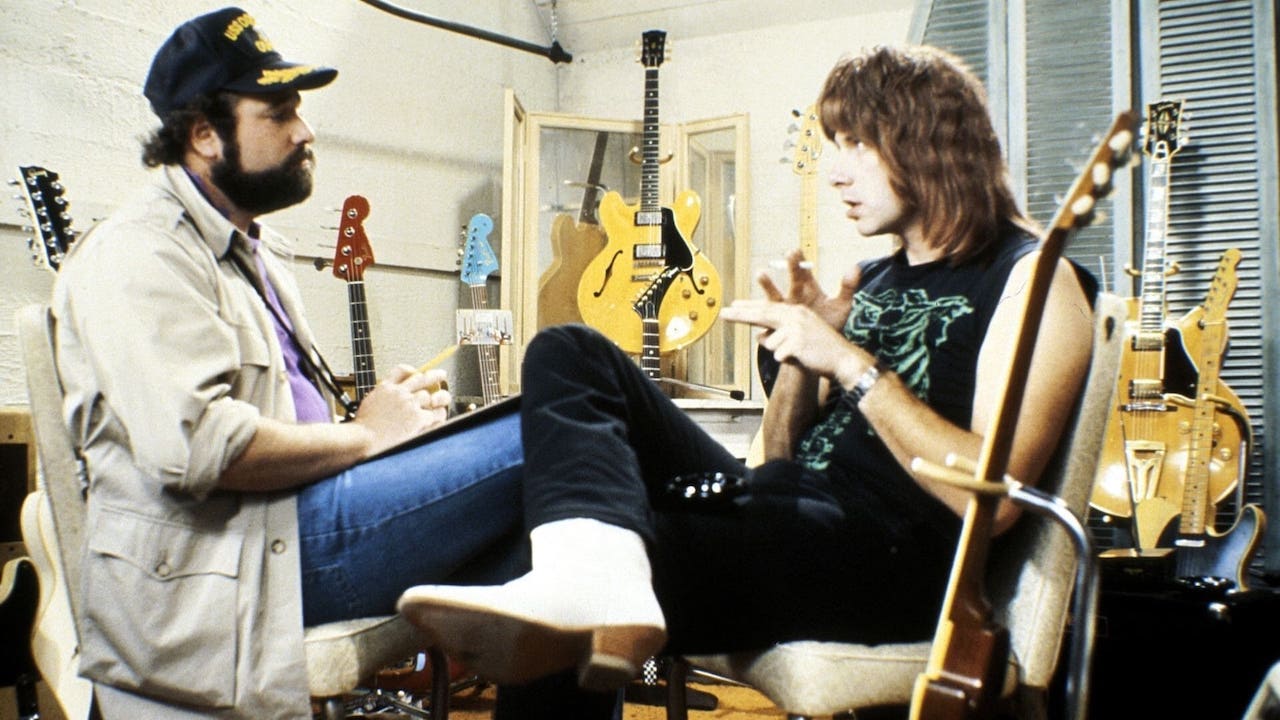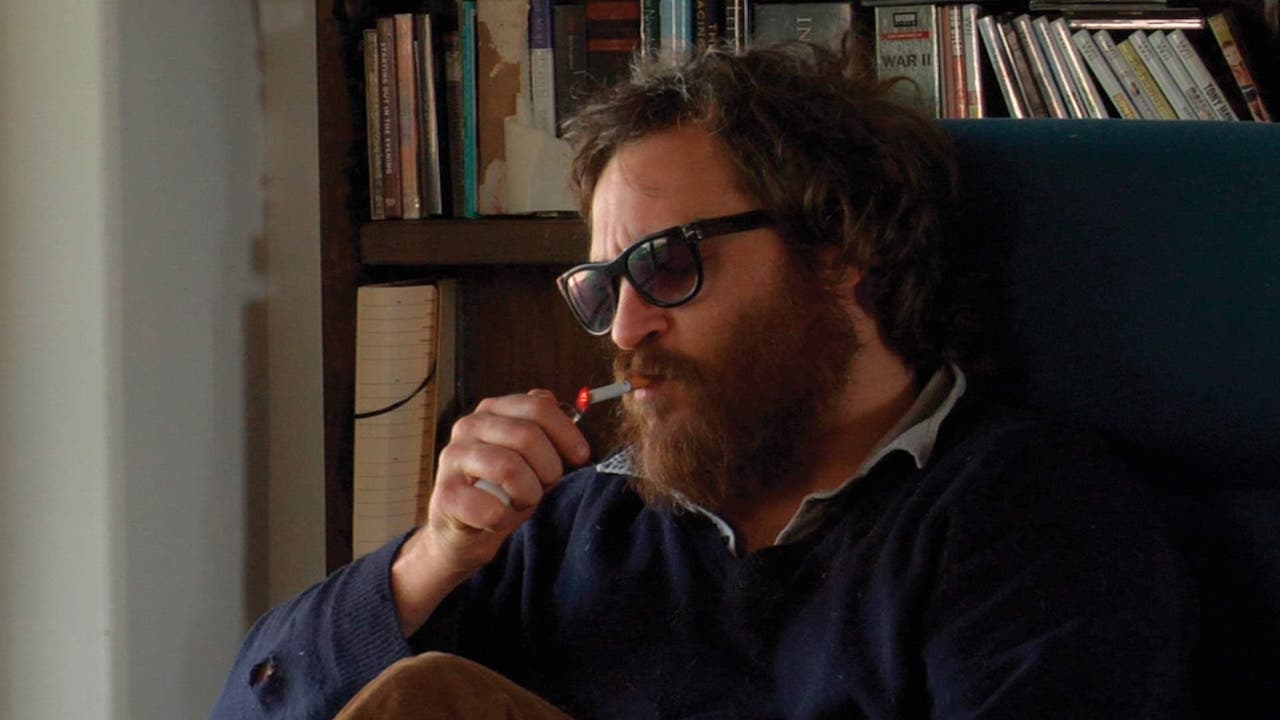Documentary, mockumentary, rockumentary: Daisy Jones & the Six continues the fake-real musician biopic

Daisy Jones & The Six is the “true oral history” of a 70s rock band through intimate talking heads segments. Thing is, the band never existed, and their somewhat inauthentic story got Luke Buckmaster thinking about similiar, better faux-docos.
Large portions of Daisy Jones & The Six are graded with a scaled back, slightly washed out colour scheme, evoking the look of a faded tattoo from a distant summer. Other scenes are presented very differently: in talking head documentary format, with the characters—members of a 70s rock band and their associates—speaking direct to camera, reminiscing on their rise from enthusiastic nobodies to superstars. This structural choice, filling an invented present with reflections about an imagined past, props up the nostalgic vibes integral to the series, which was adapted from Taylor Jenkins Reid’s novel of the same name—reportedly inspired by the story of Fleetwood Mac.
It’s a pleasant, often enjoyable, somewhat stretched-out “band breaks up” narrative—a little generic but inoffensively told, with performances that radiate gentle charm. This narrative is a form of the rise and fall story, beginning with talented nobodies cutting their teeth, then cracking the big time before, eventually, the party concludes. You know from the start (and from the title) that the titular character (Riley Keough)—an on-the-rise singer/songwriter with talent and sass—will join the band. And you can probably guess what that band is called.
It takes three episodes for the story to catch up with where we knew it would land, reflecting a pace that’s broadly unhurried but quite snappy scene by scene. This snappiness is created by oscillating between the aforementioned timelines, the directors (James Ponsoldt, Nzingha Stewart and Will Graham) and writers establishing an appealing rhythm and cadence. They use the faux-doco format in lieu of traditional voice-over, often dropping a quote that provides a pithy summary of events upcoming or just passed, or using something the characters say to insert a dramatic ellipsis.
Sometimes the technique feels too neat, too engineered. When keyboardist Karen Sirko (Suki Waterhouse) is invited to join the band and inspects a slummy shared house, for instance, we watch her hold her nose (figuratively) as she navigates through mess and encounters boozed-up blokes playing pirate dress-ups. The show then cuts to her telling the interviewer: “First impressions? Not great.” Well duh. At another point, the off-screen interviewer makes a comment to the band’s original frontman, Billy Dunne (Sam Claflin), that provides a convenient lead-in to the next episode: “That’s usually the end of the story. For you, it’s just the beginning.”

Mostly the faux documentary elements work pretty well, but here the techniques crosses over into clear contrivance, exposing its fakeness. Maintaining the ruse and treating the internal reality seriously, without wink-winking the audience, is crucial for this kind of presentation. One example of how to do it well comes from the granddaddy of music mockumentaries: Rob Reiner’s hilarious, observational documentary-subverting classic This is Spinal Tap!, which follows a fictitious English band made up of amusing nincompoops.
Spinal Tap famously release an LP with a cover that couldn’t be blacker (“like…none more black”) and own custom-made amps with volume knobs that go up to 11—none of that sissy 10 stuff. Its dry comedy is all about keeping a straight face. Absurdities are presented matter-of-factly, including the nature and performances of the songs themselves, encompassing hilarious tracks like Big Bottom. One of its stars, Christopher Guest, went on to become a rare auteur of the mockumentary format, directing several titles that similarly play it straight including 2003’s A Mighty Wind—a comedy about a folk music concert.

Another film that does a great job maintaining a poker face is Casey Affleck and Joaquin Phoenix’s I’m Still Here, which captures Phoenix’s supposed plan to retire from acting to pursue a career as a hip-hop artist. The film is more funny weird than funny ha ha, with an underlying, angsty absurdity drawn from outrageous pranksterism (Phoenix was of course faking it) rather than satirical targets.
The film’s faux reality intruded on real-life when the actor gave a now legendary in-character interview with David Letterman, hoodwinking the veteran talk show host into being a bit player for his pantomime. I’m Still Here uses the documentary format to make a point that everybody on screen—even documentary subjects—is playing a character and putting on performances.

In Daisy Jones & The Six, those performances exist in two tiers of reality: one in which the actors look into the camera, and one in which they do not. Every gaze into the lens, every utterance of faux authentic dialogue, is another way of saying: we’re real; we exist. Amusingly, of course, that’s far from the truth.
















